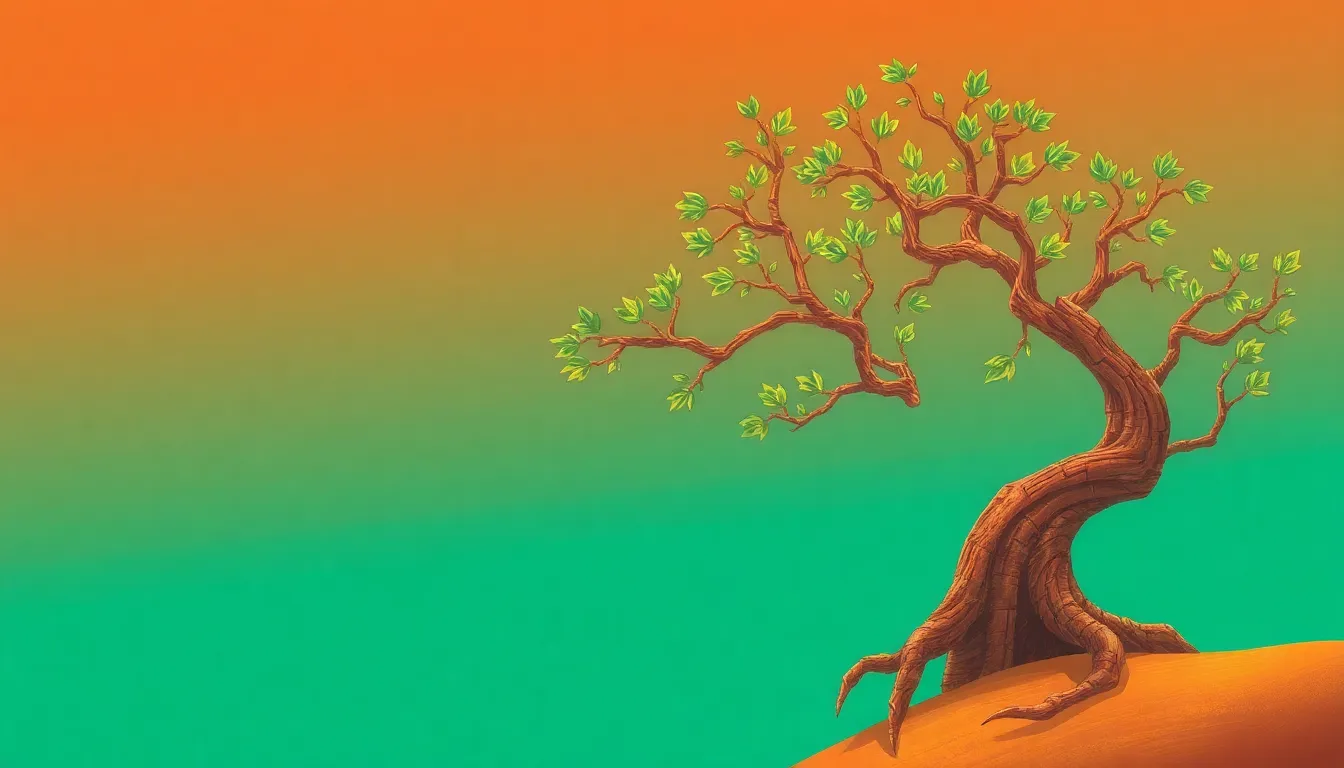The Story of the First Tree: Myths of Growth and Renewal
I. Introduction
Trees hold profound significance across various cultures, often symbolizing life, growth, and interconnectedness. From the ancient Druids who revered the oak to the sacred banyan trees of Hinduism, the presence of trees in mythology underscores their essential role in human existence. One of the most compelling narratives within this framework is the myth of the first tree, which embodies the themes of growth and renewal. This article aims to explore this myth, delving into its origins, symbolism, and enduring impact on both ancient and modern cultures.
II. Ancient Origins of the First Tree Myth
The myth of the first tree has ancient roots, appearing in various creation myths around the world. Many cultures feature trees prominently in their narratives of creation, often depicting them as the first forms of life birthed from the primordial chaos.
- Mesopotamian Mythology: The Tree of Life is a central figure in many Mesopotamian myths, symbolizing immortality and divine connection.
- Hinduism: The cosmic tree, or Ashvattha, represents the universe and the cycle of life, with its roots above and branches below.
- Christianity: The Tree of Knowledge in the Garden of Eden serves as a dual symbol of wisdom and temptation, marking the beginning of human consciousness.
In these myths, the first tree is often viewed as a bridge between the earthly and the divine, emphasizing its significance in early civilizations where trees were essential for survival, providing shelter, food, and material for construction.
III. The First Tree: A Symbol of Life and Growth
The first tree is characterized by its majestic stature and vibrant foliage, often depicted as a towering figure that stands resilient against the elements. It serves as a metaphor for growth, stability, and nourishment, reflecting humanity’s deep connection to nature.
- Growth: The tree symbolizes personal and communal growth, representing the potential within every individual to flourish.
- Stability: With its deep roots, the first tree conveys a sense of stability and permanence in a constantly changing world.
- Nourishment: The tree’s fruits and leaves provide sustenance, symbolizing abundance and the cyclical nature of life.
Through its life cycle, the first tree mirrors humanity’s journey, capturing the essence of our relationship with the natural world and the importance of nurturing that bond.
IV. Myths and Legends Surrounding the First Tree
Across various cultures, the first tree is celebrated in numerous myths and legends, each contributing to a rich tapestry of stories that highlight its significance.
- Norse Mythology: Yggdrasil, the World Tree, connects the nine realms and symbolizes the interconnectedness of all life.
- Native American Traditions: Many tribes view the sacred cedar or oak as a source of life and wisdom, integral to their spiritual practices.
- Asian Traditions: The Bodhi tree, under which Buddha attained enlightenment, is revered as a symbol of spiritual growth and awakening.
These narratives often share common themes of creation, transformation, and the cyclical nature of existence, reinforcing the notion that the first tree plays a pivotal role in the cycles of life.
V. The Cycle of Renewal: The First Tree’s Legacy
Renewal is a central concept in both nature and mythology, and the story of the first tree embodies this idea profoundly. As seasons change, trees shed their leaves and bloom anew, symbolizing rebirth and regeneration.
- Spring: Represents new beginnings, as trees blossom and life returns to the earth.
- Autumn: A time of reflection, as trees prepare for winter, shedding leaves and conserving energy.
- Winter: Symbolizes rest and dormancy, a necessary phase that allows for eventual renewal.
Real-world examples of trees, such as the oak’s impressive longevity and the resilience of the redwood, embody these themes, reminding us of the enduring cycles within nature.
VI. Modern Interpretations of the First Tree Myth
In contemporary times, the myth of the first tree continues to inspire literature, art, and environmental movements. Artists and writers draw upon this rich symbolism to convey messages of hope and renewal.
- Literature: Modern novels and poetry often explore themes of growth, using trees as central motifs to depict characters’ journeys.
- Art: Visual artists use tree imagery to represent life, change, and the interconnectedness of all beings.
- Environmental Discourse: The first tree’s legacy informs discussions around conservation and sustainability, emphasizing the importance of preserving our natural world.
These adaptations highlight the relevance of the first tree story in today’s context, encouraging a deeper understanding of our relationship with nature.
VII. Lessons from the First Tree: Growth and Resilience
The myth of the first tree offers valuable lessons in personal and communal growth, resilience, and the importance of nurturing our connections to nature.
- Personal Growth: Just as a tree grows towards the light, individuals are encouraged to seek their own paths of growth and self-discovery.
- Community Resilience: Trees often grow in forests, symbolizing the strength found in community and mutual support.
- Practical Applications: We can apply lessons from the first tree by fostering sustainable practices in our daily lives, from planting trees to reducing waste.
These lessons resonate deeply, reminding us that resilience is essential in overcoming challenges, much like the enduring strength of the first tree.
VIII. Conclusion
In summary, the myth of the first tree holds significant meaning across cultures, symbolizing growth, renewal, and the interconnectedness of life. The enduring themes within this myth encourage us to reflect on our own relationships with nature and the cycles of life that surround us. As we contemplate the legacy of the first tree, we are invited to embrace our roles as stewards of the earth, fostering growth and resilience in ourselves and our communities.




